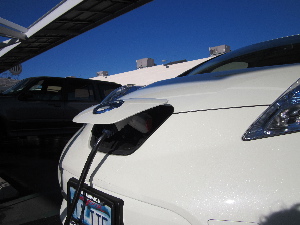Talking turkey: 54.5 MPG = Another $17 in your pocket this weekend

If we all were driving cars that averaged the newly announced federal standard for fuel efficiency, Californians would save $34.9 million this Thanksgiving weekend. At least, those are the numbers from a report released today In Culver City by Environment California. That $17 per family spells another four holiday pies or a few more lattes on the way home. Put that slice of information on your Christmas list — not for this year but for 2025. Even with the usual exemptions and provisions, the new standard announced by the Obama administration would still effectively almost double the average gas mileage for a carmaker’s fleet in those 14 years.
Plenty of people believe that this move will be good for business, not the least of which are the 13 automakers and the head of the United Auto Workers union who stood with President Obama when he announced the proposed standards last July.

Ceres, a national coalition of investors, environmental organizations and other public interest groups, says the new standard would create more than 57,000 new jobs in California. Their economic model suggests that money saved on gas will get spent elsewhere in the economy, boosting job growth not only in the auto industry but also in retail, health care, food services, construction and even education. Come next month, the new standards will get another Golden State “goose” when the Air Resources Board proposes that 15% of the new cars and small trucks sold in the state will have to be powered by batteries, fuel cells or some other low-emission technology by 2025.
Fifty-four miles per gallon is not as far out of reach as you might think. At the L.A. Auto Show this week, close to 20 out of the 50 new vehicle debuts boast 40+ MPG. The National Automobile Dealers Association has criticized the new rules, saying it would tack another $4,000 onto the average price of a car. The Ceres study pegs the price jump at more like $3,200, and it also calculates a low-end savings estimate of $4,900 at the pump over the life of a 2025 vehicle. Electrics are part of the picture but still need work to be widely adopted, says a new NPR series that started today. Nissan’s Leaf gets around 100 miles per charge, maybe not quite enough to get you “over the river and through the woods.” Plenty of food for thought along with your turkey and stuffing, and something to dream about besides sugar plums.
